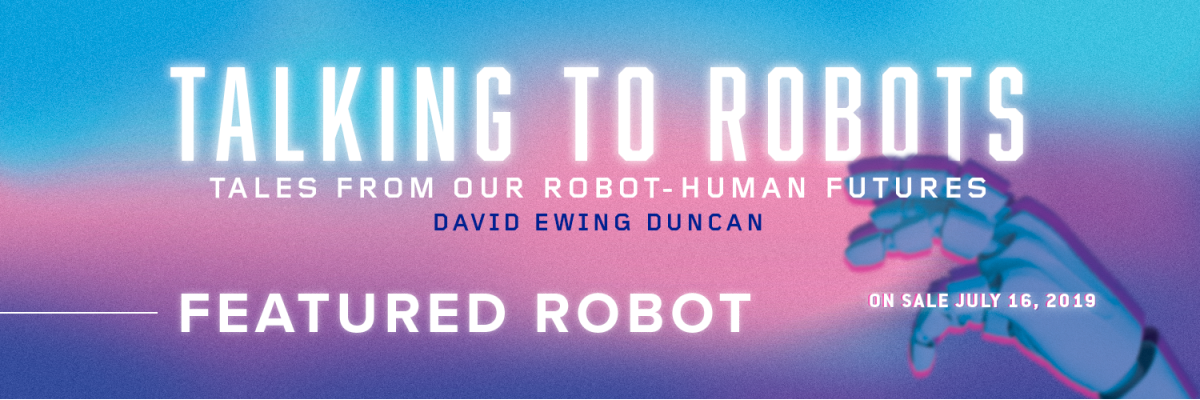
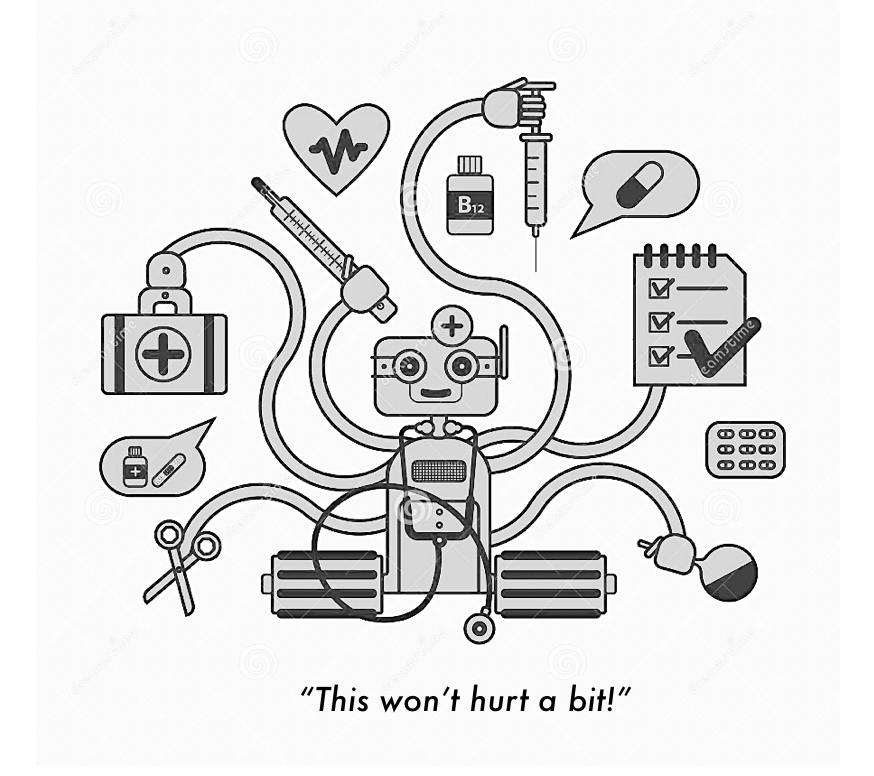
“I’d love to have a robot that was able to be with me at every visit, to interpret the data and the context… to tell me: what are the possibilities. Then I can have a real discussion and discuss your value system and what’s best for you.” – David Agus, MD
Who would have guessed that in the future that we would fall in love so fast with our robot physicians? Sure, in the beginning we reacted like we did with other newfangled gizmos that initially confused us but looked really cool. Remember when we got our first iPhone and wondered what was going on with that sleek plastic slab that had only one giant button? It took us less than a minute to figure them out and to fall so madly in love with our phones that we couldn’t put them down, not even in bed.
Humans in the future don’t literally sleep with their doc bots, although some of the health data collected by our ultra-smart phones happens while we sleep. That’s when they track our REMs, heart rates, daily steps, and the temperature of our skin. Later, our super-duper-smart phones were equipped with micro-photon-lasers that used light waves (no needles!) to continuously monitor levels of hormones, proteins, and metabolites in our blood that change as we eat, sleep, have sex, and get stressed, hopefully not in that order. It’s hard to remember that in the early twenty-first century, people didn’t have micro-photon-lasers on their phones. Seriously! Which makes you wonder how people back then knew when to eat what, or when one’s hormones were optimal for copulation or for falling in love, also not necessarily in that order.
But this came later, after we got over our initial anxiety about doc bots. Which, truth be told, was far more challenging for us than our confusion over our smartphone’s big button. After all, doc bots in the future are not merely a delivery system for apps that help us find a great taco shack nearby or a potential date on OkCupid. Doc bots are our caregivers. We place our lives, and those we love, in the hands of these healers made out of circuits and silicon, with no buttons at all.
The hardest part was trusting our robo-docs to show compassion and empathy. We wondered: Could a machine really provide the wise and steady eye contact that we expected from a flesh-and-blood physician? Or the caring touch of a human palm resting gently on our shoulder as we poured out our health secrets, hopes, and fears? We agreed with David Agus, a famous oncologist back in 2018 when he said, “Empathy is one of the key things in medicine.” Agus wrote bestselling books on how to stay healthy. He also was one of the docs who kept Apple co-founder Steve Jobs’s cancer at bay for longer than most people believed possible. “My job as a doc is not necessarily to make a diagnosis,” he said, sitting in a no-nonsense office in Los Angeles just off Beverley Drive back in 2018. “My job is to give you the right treatment for your value system, to make you comfortable, to have optimism, and to have a good outcome.”
Regrettably, most people back then didn’t have David Agus as their physician. The closest they got to the sort of interactions he described, and humans wanted from flesh and bloods, was on television when actors played wise and caring doctors in dramas and soap operas—like George Clooney when he played the gentle, all-knowing Dr. Doug Ross on television’s ER, before his hair turned gray and his chin more rugged. Or the no-nonsense Meredith Grey on Grey’s Anatomy, played by Ellen Pompeo. People also saw smiling, good-looking physicians who seemed kind and understanding in commercials for pink and purple pills that seemed so helpful to other very attractive people with anxiety disorders or with ED (erectile dysfunction)—as long as you tuned out the gibberish about horrible side effects the announcer said really fast at the end of each ad.
In the real world back in Agus’s day, people had to wait weeks or months for doctor’s appointments, and then hours more in an aptly named waiting room when their doc inevitably ran late. (It was kind of baffling why this always happened—were these hypereducated experts unable to use the latest scheduling apps or read the time on an Apple Watch?) Patients sat waiting on chairs designed for Stoics in the nineteenth century, reading magazines that were years out of date. (Ditto about doctor’s offices that never seemed to have recent issues of Good Housekeeping or National Geographic Kids.) When patients finally got in to see their doc, the MDs seldom looked rested and joyous like on TV as they felt our kidneys, listened to us breathe through a stethoscope, and asked us how we were doing as they took up half the allotted twelve-minute exam gazing at our medical history and labs on a computer screen before dashing off to see the next patient. People in those days were also forced to pay small fortunes for insurance policies that seemed designed by sadists. Medical bills made people think of a Rube Goldberg contraption, breathtakingly convoluted and baffling contraptions that were so ridiculous they were funny, except that medical bills back then were no laughing matter.
Not that physicians didn’t aspire to be like Doug Ross or Meredith Grey. Many of them originally got into medicine to help their fellow humans and to heal and comfort them—doctors like David Agus. This made it all the more upsetting when too many human physicians back then complained of feeling burned out and unhappy with their jobs, with some suffering from “compassion fatigue.” By the last quarter of the twentieth century, physicians in the US felt as though they were increasingly becoming ensnared by a medical system that treated them like machines—or cogs in machines, or cogs within cogs. This came about as the multitrillion-dollar business of healthcare increasingly rewarded docs for spending less time with patients and more time clicking on digital boxes to verify billing codes, which brought in more reimbursements (cash) from insurers—all while they tried to fend off pharmaceutical reps who cajoled them to stock buckets of those little pink and purple pills. Never mind that they cost thirty times as much as the generic version of the exact same drug. Docs were also expected to write detailed notes to avoid malpractice suites, something they called CYA medicine, for Cover Your Ass.
Around this time, a family care physician named Jordan Shlain in San Francisco talked about something that was regrettably missing from most doctor-patient interactions. “I believe that the fundamental unit of humanity is a conversation,” said Shlain back in 2018, “a story with a beginning, middle, and end. I think that people get anxious when they get cut off. You don’t get to finish. We don’t give doctors a chance to have a beginning and an end from patients. Or they get a beginning and an end and no middle. Patients leave unsatisfied.
Still, docs could dream. Which led Agus, Shlain and others to imagine a future where AI and robo-helpers would be available to help them look up stuff like drug-on-drug interactions, genetic pro- files, obscure diagnoses for why a patient had green splotches on their skin, and the latest outcomes data for that new laparoscopic procedure. “I’d love to have a robot that was able to be with me at every visit,” said David Agus, “to interpret the data and the context; to look at your condition compared to every other patient with similar characteristics; to predict the trends; to tell me: what are the possibilities. Then I can have a real discussion and discuss your value system and what’s best for you.
For the complete chapter buy a copy of book here.

David Agus
David B. Agus, MD, is a professor of medicine and engineering at the University of Southern California Keck School of Medicine and Viterbi School of Engineering and the founding director of USC’s Lawrence J. Ellison Institute for Transformative Medicine. Dr. Agus specializes in treating patients with advanced cancer. After earning his medical degree from the University of Pennsylvania School of Medicine, he completed his medical residency training at Johns Hopkins Hospital, a research fellowship at the National Institutes of Health, and an oncology fellowship at the Memorial Sloan-Kettering Cancer Center. Dr. Agus’ 2012 book The End of Illness was a New York Times #1 and international best seller, and the subject of a PBS series. His books A Short Guide to a Long Life and The Lucky Years: How to Thrive in the Brave New World of Health were also New York Times and international bestsellers. He lives in California with his wife, two children, and dog named Sadie.
David Agus Quotes from Talking to Robots:
“I’d love to have a robot that was able to be with me at every visit, to interpret the data and the context; to look at your condition compared to every other patient with similar characteristics; to predict the trends; to tell me: what are the possibilities. Then I can have a real discussion and discuss your value system and what’s best for you.”
“There’s no way that my brain can be as good at the data as a computer; it’s just not possible.”
“My job as a doc is not necessarily to make a diagnosis. My job is to give you the right treatment for your value system, to make you comfortable, to have optimism, and to have a good outcome.”
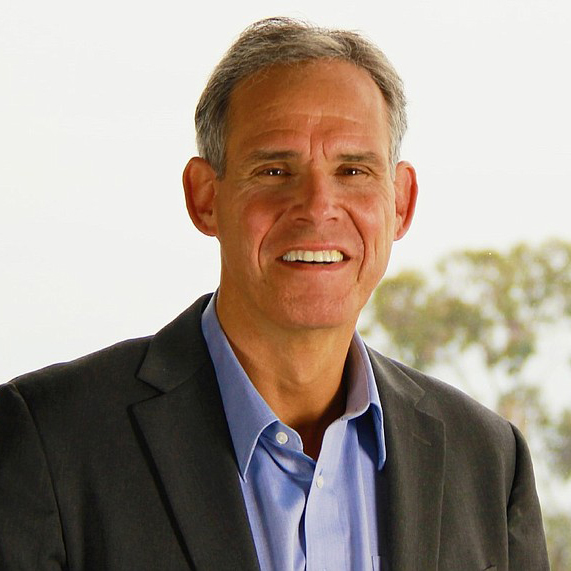
Eric Topol
Eric Topol, MD, is a professor in the Department of Molecular Medicine at Scripps Research, and the founder and director of Scripps Research Translational Institute. Topol is the author of two bestselling books on the future of medicine: The Creative Destruction of Medicine and The Patient Will See You Now. Deep Medicine, focused on artificial intelligence, was published in 2019. Topol earned his medical degree from the University of Rochester and, after additional training at the University of California, San Francisco and Johns Hopkins University, went to the University of Michigan where he became a tenured professor. Subsequently, as chief of cardiovascular medicine at Cleveland Clinic, he founded a new medical school and led the organization to become the #1 center for heart care in the nation. In 2017 he founded the Scripps Translational Science Institute, which joined Scripps Research].
Eric Topol Quote from Talking to Robots:
“To have a doc bot, I think we will need a neural network with thousands of convoluted layers of data assembled, plus what it all means for individuals. What makes your data different from mine, and what, if anything, should be done medically or with your diet? Or how did breaking up with your boyfriend impact your health?”
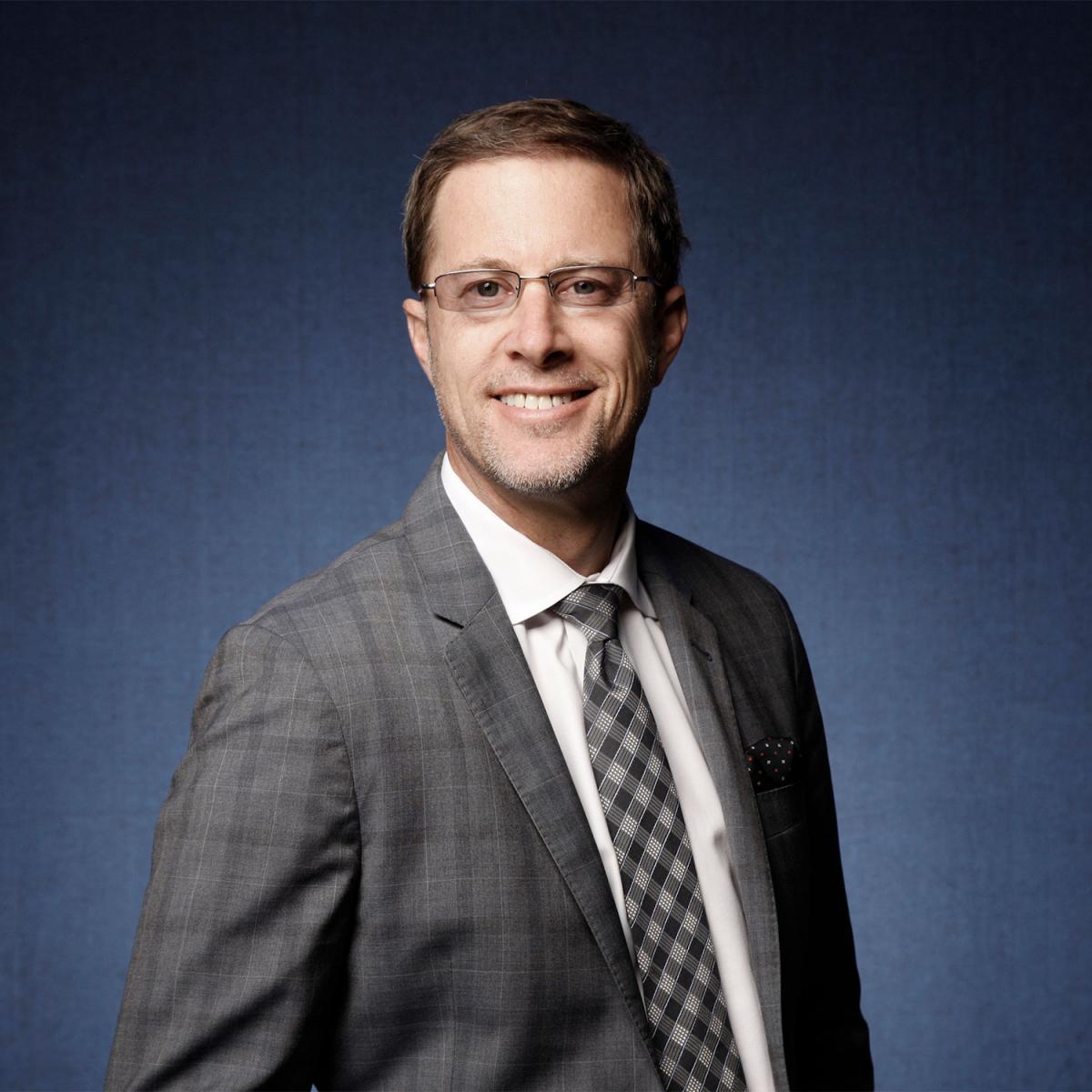
Jordan Shlain
Jordan Shlain, MD, is a physician, entrepreneur, publisher and healthcare systems designer. He is the founder of Healthloop, the editor-in-chief at Tincture and a practicing primary care doctor with offices and partners in San Francisco, Silicon Valley and Los Angeles. His leadership has emphasized a fundamental redesign of how healthcare is delivered, utilized and understood in the context of proactive communication, individualized surveillance, shared-decision making, on-demand access and a deep sense of empathy and the human spirit. He is the founder and chairman of the Institute for Responsible Nutrition, a non-profit working to change our food composition to reduce the alarming trend of children getting ‘adult-onset’ diabetes as well as an active board member for the Washington DC based, Hope Street Group. In 2009, the mayor of San Francisco asked Dr. Shlain to serve on the San Francisco Health Commission where he oversaw an $800MM budget for 47,000 employees.
Jordan Shlain Quotes from Talking to Robots:
“I believe that the fundamental unit of humanity is a conversation, a story with a beginning, middle, and end. I think that people get anxious when they get cut off. You don’t get to finish. We don’t give doctors a chance to have a beginning and an end from patients. Or they get a beginning and an end and no middle. Patients leave unsatisfied. Doctors are unsatisfied.”
“Doctors will be among the last to go, to be replaced by robots. I think rabbis and priests are the last people that go away, and one cut underneath them is doctors.”
Book (More Books Here)
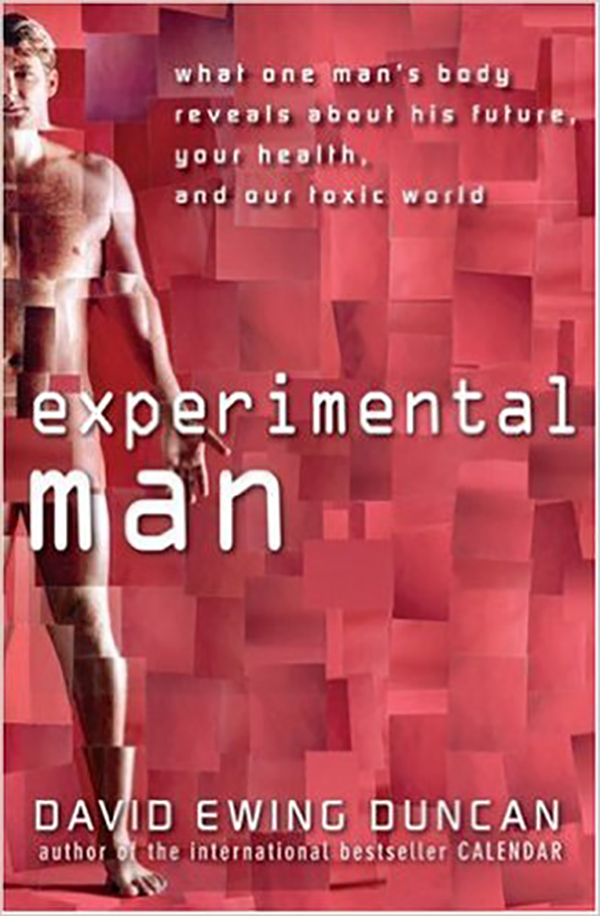
Experimental Man: What one man's body reveals about his future, your health, and our toxic world
John Wiley & Sons
National Bestseller
Select Articles (More Articles Here)
Wired
The Next Best Version of Me: Creating the First Synthetic Human
April, 2018
MIT Technology Review
Can AI Keep You Healthy?
A Chinese entrepreneur wants to track your health data and suggest ways to improve. But are computers really smart enough to make sense of all that information?
October, 2017
Wired
One of the First Humans to Ever be Genetically Sequenced
October, 2002
Atlantic
Destroying Medicine To Rebuild It: Eric Topol On Patients Using Data
In His New Book, The Cardiologist And Director Of The Scripps Translational Science Institute
Mar 12, 2012
Atlantic
Do Genes Really Augur Your Future?
For Some People, Genes Are Key To Predicting Our Future Health. For Others, Genes As Crystal Balls Are Overhyped. Let's Call It A Truce Because Both Sides Are Right.
May 18, 2012
Conde Nast Portfolio
You 2.0: I'm Doomed. Or Not.
April 24, 2008
Fortune
Genes 'R' Us: The New Dot-Coms?
March 5, 2008
MIT Technology Review
Linking Environmental Chemicals to Disease
Stanford researchers use a novel approach to link pesticides and an ingredient in vitamin E to diabetes.
May 21, 2010
Talks (More Talks Here)
TEDx Berkeley
“BioBabel: Too much data, too little understanding”
Exponential Medicine
“Human 3.0: How to build a better human?”
Stanford’s Big Data in Biomedicine Conference
“You as Data: Can big data predict your health future?”
NPR Segments and Commentary (More NPR and Television Here)
NPR: All Things Considered
My Life As A Human Guinea Pig
David Ewing Duncan decided to subject himself to more than 200 physical and mental tests — not just for fun, but to write a book about his experience. It's called Experimental Man. Duncan talks with host Jacki Lyden about how close we are to a future where tests can predict our precise risk for developing illness.
NPR: Morning Edition
Full DNA Rundown Can Predict Future Health
Commentator David Ewing Duncan has become the first human to be screened for almost all known genetic disorders. A biotech company trying out its new genetic testing kits, put David through a day's worth of examinations, charting most of his DNA maladies. While some critics are suspicious of the new procedures and others worry about a future of genetic discrimination, David found that he might fend of a number of diseases despite his DNA's predisposition toward a range of illnesses.
NPR Talk: BioTech Nation: “BioIssue of the Week”
IT and Biotech
May 11, 2016
NPR Talk: BioTech Nation: “BioIssue of the Week”
Wearable Technologies
February 19, 2015
NPR Talk: BioTech Nation: “BioIssue of the Week”
Hacking DNA
January 1, 2016
NPR Talk: BioTech Nation: “BioIssue of the Week”
Can We Decode Our Minds?
August 27, 2014